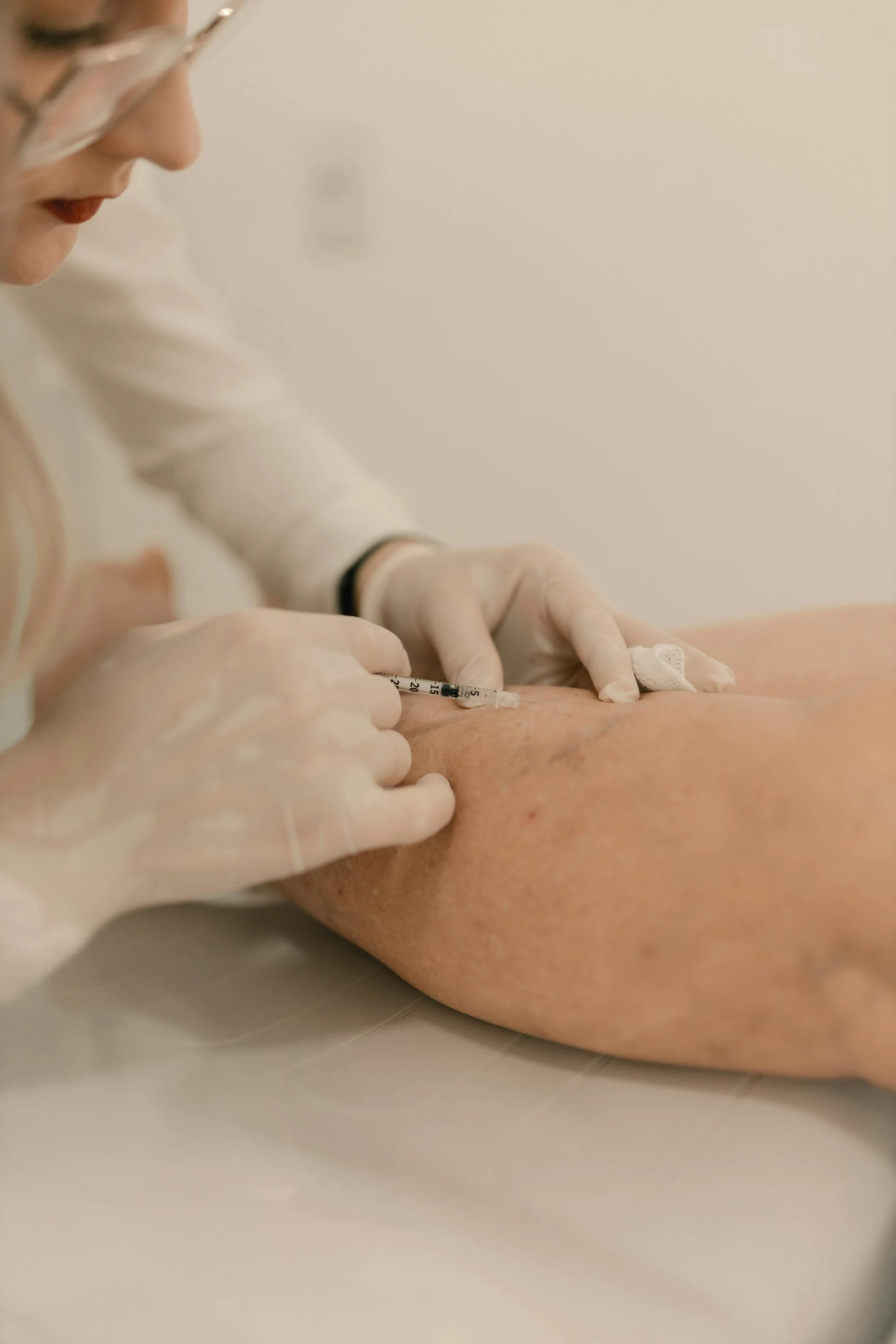Understanding Phlebitis: Inflammation of Veins
Phlebitis sounds technical, but the concept is straightforward: it’s inflammation of a vein. Sometimes it’s superficial (near the skin) and uncomfortable but manageable; other times it’s deeper and linked to blood clots, which can be dangerous. Knowing how to spot it and what to do next can prevent complications and get you back on your feet faster.
What exactly is phlebitis?
Phlebitis refers to inflammation in the vein wall. It most commonly occurs in the legs, but it can appear in the arms or elsewhere, especially after IV placement or injections. When inflammation is accompanied by a blood clot, the condition is called thrombophlebitis.
Superficial thrombophlebitis (STP): involves veins close to the skin; usually less dangerous.
Deep vein thrombosis (DVT): involves deeper veins; can lead to a pulmonary embolism if a clot travels to the lungs and is a medical emergency.
How it feels: common symptoms
Many people first notice tenderness and redness along a vein. You might also experience:
A warm, cord-like vein you can feel under the skin
Swelling in the surrounding area (or the entire limb in deeper cases)
Pain or throbbing, worse when standing or walking
Color changes of the skin over the affected vein
If the inflammation is deeper (possible DVT), symptoms may include more diffuse swelling, heaviness, cramping, or sudden shortness of breath (urgent!).
Why does phlebitis happen? (Causes & risk factors)
Phlebitis rarely appears “out of nowhere.” It usually arises from one or more of the following:
Direct vein irritation or injury
IV lines, injections, or trauma
Varicose veins (dilated, dysfunctional veins prone to inflammation)
Blood flow and clotting changes
Prolonged immobility (long flights, bed rest, recovery after surgery)
Smoking, dehydration, or obesity
Pregnancy and postpartum changes
Estrogen-containing medications (e.g., some birth control pills, HRT)
Inherited or acquired hypercoagulable states (e.g., Factor V Leiden)
Cancer and some cancer treatments
Is it dangerous?
Superficial phlebitis is often uncomfortable but typically less serious. However, if the inflamed superficial vein is close to a deep vein junction, clots can extend into deeper veins. DVT, on the other hand, can be life-threatening if part of the clot breaks off and travels to the lungs (pulmonary embolism). That’s why rapid evaluation is essential when symptoms suggest deeper involvement.
How clinicians diagnose it
Your clinician will start with a focused history and physical exam. To confirm or rule out a clot, they may order:
Duplex ultrasound to visualize veins and assess blood flow
D-dimer blood test (less specific, often used in DVT evaluation algorithms)
Additional labs in recurrent or unexplained cases to check for clotting disorders
Treatment: from home care to anticoagulation
Treatment for phlebitis depends largely on the type and severity of the condition, as well as the presence of blood clots. For uncomplicated superficial phlebitis that does not involve deep veins, care often begins with simple measures aimed at reducing inflammation and improving circulation. Doctors typically recommend the use of compression stockings to support blood flow, alongside elevating the affected limb to help minimize swelling. Nonsteroidal anti-inflammatory medications, such as ibuprofen, may be advised to alleviate both pain and inflammation, while warm compresses can provide additional relief and promote healing. An ice pack to the area for 15-20 minutes several times per day can also be very helpful alleviating symptoms Staying gently active, such as through light walking, can also enhance blood flow and prevent clot formation.
When phlebitis involves larger areas, extends over five centimeters, or is located near the junction of a deep vein, anticoagulation therapy may be necessary. In these cases, a healthcare provider may prescribe blood thinners like direct oral anticoagulants (DOACs) or low molecular weight heparin (LMWH) to prevent clots from forming or growing. Deep vein thrombosis (DVT) always warrants prompt treatment with anticoagulants and careful follow-up, as untreated DVT poses a risk of pulmonary embolism.
If the inflammation occurs at the site of an intravenous line, simply removing the catheter and applying local care is often sufficient. However, if there are signs of infection, such as fever, pus, or rapidly spreading redness, antibiotics may be required, and the situation is managed more aggressively. By tailoring treatment to the severity and underlying cause, doctors can effectively relieve discomfort and prevent complications.
Prevention: practical steps you can take
You can’t change inherited risks, but you can lower your overall chances:
Move regularly, stand up, and walk on long flights or after surgery when cleared
Wear compression stockings if you have varicose veins, stand for long periods and during travel.
Hydrate and avoid smoking
Discuss hormone-containing medications with your clinician if you have clot history or significant risk factors
Manage weight and chronic conditions (like cancer or autoimmune diseases) with your care team
When to seek medical care: immediately
Call your clinician (or emergency services) if you have:
Sudden shortness of breath, chest pain, or coughing up blood – call 911
Significant swelling of an entire limb
Fever, chills, or spreading redness over a vein
A history of DVT/PE and new symptoms suggestive of recurrence
Phlebitis close to the groin or other deep vein junctions
Bottom line
Phlebitis ranges from mildly painful to medically urgent. The key is distinguishing superficial inflammation (often managed conservatively) from deep involvement (which can require anticoagulation and close follow-up). If you notice a warm, red, tender vein or swelling that doesn’t make sense, get evaluated quickly. Early diagnosis and targeted treatment prevent complications and help you heal faster.
Elmore Medical Vein & Laser Treatment Center is the premier vein specialty medical practice in the Central Valley. Dr. Mario H. Gonzalez and his staff offer years of experience and medical expertise that you won’t find anywhere else. Contact us to set up a consultation appointment.

